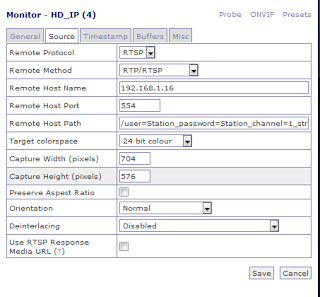Budget video surveillance for stingy "dummies"
Soon there will be 7 years since the writing of the article " Video surveillance under Ubuntu for" dummies "(ZoneMinder)". Over the years, it has been adjusted and updated more than once due to the release of new versions, but the cardinal problem, namely the cost of IP cameras, has remained the same. It was bypassed by digitizing analog streams and emulating IP cameras using a USB webcam.
The situation has changed with the advent of the Chinese camera standard ONVIF 2.0 (Open Network Video Interface Forum). Now you can configure any camera that meets the standard using the ONVIF Device Manager .

Moreover, you can immediately see the addresses and parameters of streaming from the camera. Yes Yes. Now flows, at least - 2, not counting the sound. One archive - in maximum quality, the other - working in a lower resolution.
')
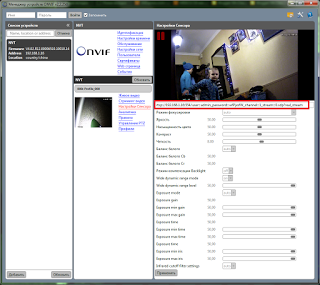
* All images are clickable.
I will tell on the example of the camera MISECU IPC-DM05-1.0 I bought it on “Black Friday” at a price of 1059.15 rubles. Now they have raised the price and I would rather have acquired GADINAN . That in other matters, the same. In any case, the hardware of my camera is defined as hi3518e_50h10l_s39 regardless of what logo is written on the box. The dome camera, in fact is a ball "on a string" easily removable from the holder. If you order, please note that the power supply must be purchased separately (DC 12V / 2A). I used the BP from the burnt-out Chinese same desktop clock. Unfortunately, there is no sound and position control in the camera. For these purposes, any suitable baby monitor like this or that . The main thing is that the name would have the word Onvif.
After unpacking and switching on, you must set the IP address of each camera (by default, everyone has a hard time of 192.168.1.10) so that they do not conflict with each other. This can be done in ONVIF Device Manager or by the standard utility tool General Device Manage, which comes bundled, on a mini CD. Next, set the time zone, date display options and the name for each camera. We create users with the rights "for viewing only".
The web interface of the camera, the CMS program and the cloud interface in the browser are exactly the same, inconvenient and require IE with ActiveX.
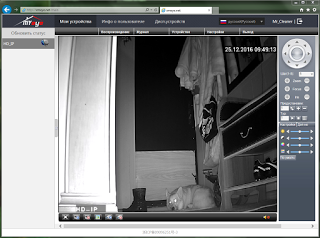
Fortunately, they can be successfully replaced by an XMeye application installed on Android or iOS. But first you need to make our camera visible to the cloud. To do this, open the port on which Onvif (8899) is running on your switch. In my case - this is NAT Setting-Virtual Server. If there are several cameras, then the internal port for each IP is left unchanged, and the external one is changed for a couple of values. Further, the camera itself will knock on the cloud and present its individual CloudID. You will only need to add it to your profile in the cloud.
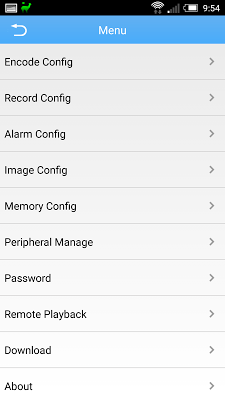
Actually, the camera itself can already detect movement, stream the video and send allarms. Together with the cloud service XMeye is a ready-made monitoring service.
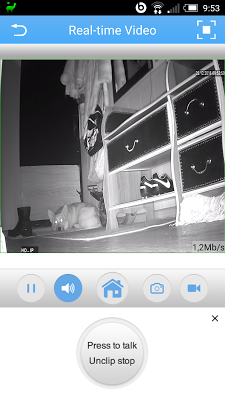
If you want to have your own recorder with archives, and you like Windows, then install free iSpy , or SecurOS Lite (up to 32 cameras) or the free version (up to 8 cameras) of Xeoma . By the way, the latter has versions for Mac OS X, Linux including ARM and Android.

There should be no problems with the settings, so you can stop reading. The rest of the article is written for Linux.
I was pleasantly surprised to find a wizard in Zoneminder v.1.30.0 to configure ONVIF cameras. It allows you to connect to the console any of the streams coming from the camera, depending on the hardware capabilities and the needs of the operator.
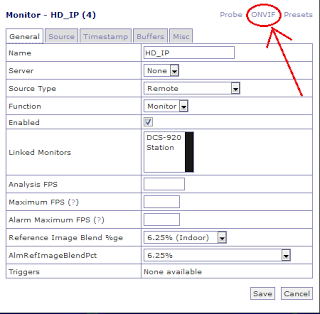
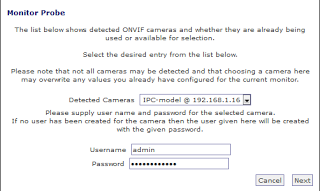

Installing and configuring Zoneminder has never been easy. The latest version came out especially capricious and requires pre-installation of the LAMP web server, followed by a series of additional actions . Therefore, I will give the old "Jedi" way to connect the camera for older versions:
1. Define stream addresses via ONVIF Device Manager or Xeoma. You should have something like this:
or
Do not forget to replace the asterisks (*) with your own data.
2. Check the addresses in the VLC player. Menu-Media-Open IRL
3. Add a new monitor with parameters:
Good luck.
The situation has changed with the advent of the Chinese camera standard ONVIF 2.0 (Open Network Video Interface Forum). Now you can configure any camera that meets the standard using the ONVIF Device Manager .

Moreover, you can immediately see the addresses and parameters of streaming from the camera. Yes Yes. Now flows, at least - 2, not counting the sound. One archive - in maximum quality, the other - working in a lower resolution.
')

* All images are clickable.
I will tell on the example of the camera MISECU IPC-DM05-1.0 I bought it on “Black Friday” at a price of 1059.15 rubles. Now they have raised the price and I would rather have acquired GADINAN . That in other matters, the same. In any case, the hardware of my camera is defined as hi3518e_50h10l_s39 regardless of what logo is written on the box. The dome camera, in fact is a ball "on a string" easily removable from the holder. If you order, please note that the power supply must be purchased separately (DC 12V / 2A). I used the BP from the burnt-out Chinese same desktop clock. Unfortunately, there is no sound and position control in the camera. For these purposes, any suitable baby monitor like this or that . The main thing is that the name would have the word Onvif.
After unpacking and switching on, you must set the IP address of each camera (by default, everyone has a hard time of 192.168.1.10) so that they do not conflict with each other. This can be done in ONVIF Device Manager or by the standard utility tool General Device Manage, which comes bundled, on a mini CD. Next, set the time zone, date display options and the name for each camera. We create users with the rights "for viewing only".
The web interface of the camera, the CMS program and the cloud interface in the browser are exactly the same, inconvenient and require IE with ActiveX.

Fortunately, they can be successfully replaced by an XMeye application installed on Android or iOS. But first you need to make our camera visible to the cloud. To do this, open the port on which Onvif (8899) is running on your switch. In my case - this is NAT Setting-Virtual Server. If there are several cameras, then the internal port for each IP is left unchanged, and the external one is changed for a couple of values. Further, the camera itself will knock on the cloud and present its individual CloudID. You will only need to add it to your profile in the cloud.

Actually, the camera itself can already detect movement, stream the video and send allarms. Together with the cloud service XMeye is a ready-made monitoring service.

If you want to have your own recorder with archives, and you like Windows, then install free iSpy , or SecurOS Lite (up to 32 cameras) or the free version (up to 8 cameras) of Xeoma . By the way, the latter has versions for Mac OS X, Linux including ARM and Android.

There should be no problems with the settings, so you can stop reading. The rest of the article is written for Linux.
I was pleasantly surprised to find a wizard in Zoneminder v.1.30.0 to configure ONVIF cameras. It allows you to connect to the console any of the streams coming from the camera, depending on the hardware capabilities and the needs of the operator.



Installing and configuring Zoneminder has never been easy. The latest version came out especially capricious and requires pre-installation of the LAMP web server, followed by a series of additional actions . Therefore, I will give the old "Jedi" way to connect the camera for older versions:
1. Define stream addresses via ONVIF Device Manager or Xeoma. You should have something like this:
rtsp://192.168.1.4/onvif1 or
rtsp://192.168.1.1*/user=****_password=****_channel=1_stream=1.sdp?real_stream Do not forget to replace the asterisks (*) with your own data.
2. Check the addresses in the VLC player. Menu-Media-Open IRL
3. Add a new monitor with parameters:
Source Type -Remote
Remote Host Path -rtsp://192.168.1.1*/user=****_password=****_channel=1_stream=1.sdp?real_stream
Good luck.
Source: https://habr.com/ru/post/370015/
All Articles
